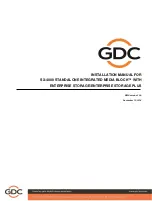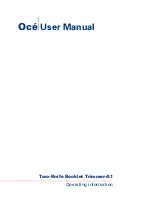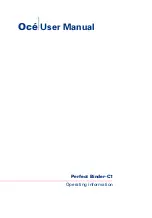
P/N 3102527-
EN • REV 001 • ISS 14SEP18
3 / 4
Installation
Notes
•
To ensure proper operation, store the detector within the
recommended ranges. Allow the detector to stabilize to room
temperature before applying power.
•
The dust cover (supplied) must remain on the detector during
installation and be removed prior to commissioning and service.
The dust cover is not a substitute for removing the detector during
new construction or heavy remodeling.
•
Do not install detectors until after final construction cleanup (unless
otherwise specified by the AHJ).
•
Install per NFPA 720
Standard for the Installation of Carbon
Monoxide (CO) Detection and Warning Equipment
, UL 2075
Standard for Gas and Vapor Detectors and Sensors
, and
applicable codes.
To install the detector:
1. Install and wire the base as described on the installation sheet
supplied with the base.
2. Set the detector address. Refer to the panel technical reference
manual for a list of valid addresses. Use a screwdriver to adjust
the two rotary switches on the back of the detector.
(See Figure 3:) Set the left rotary switch (0 through 12) for the 10s
and 100s digit and the right rotary switch for the 0 through 9 digit.
3. Attach the detector to the base by rotating the detector clockwise
until it snaps into the locked position.
4. If required by the AHJ or local codes, affix the supplied CO
Warning Label (P/N 3303928) in proximity to the detector.
Figure 3: Setting detector address (address 52 shown)
(1) Insert a screwdriver here to set the address
Testing
Before testing, notify the proper authorities that the fire alarm system is
undergoing maintenance and will be temporarily out of service.
Test each sensor in the detector.
Note:
If the CO sensor is programmed as an alarm point, it must
comply with the requirements of NFPA 720.
To perform an initial installation test:
1.
Visually inspect each detector and verify that it is installed in the
correct location. Make sure that factors not apparent on the plans
do not adversely affect the detector.
2.
Remove the detector from its base and verify that the proper
detector address, trouble signals, and messages are reported.
3.
If wired for Class A operation, verify that the detector continues to
operate first with SLC_IN disconnected, and then with SLC_OUT
disconnected. (Refer to the installation sheet for the base.)
4.
Place a momentary ground fault on the SLC circuit and verify
operation of the ground fault detection circuitry.
5.
Perform a sensor function test, as described below.
To perform a CO sensor function test:
1. Use the fire alarm control panel to put the detector into accelerated
response mode. (Refer to the panel technical reference manual for
instructions.)
2. Activate the CO sensor using SDI LLC model Solo C6 CO aerosol
spray without covering the head, or using the Testifire detector
tester per the
manufacturer’s instructions.
Maintenance
To ensure proper operation, plan maintenance (regular or selected) of
the detector in accordance with the AHJ and all applicable governing
laws, codes or standards. Refer to NFPA 720
Standard for the
Installation of Carbon Monoxide(CO) Detection and Warning
Equipment
.
Refer to application bulletin 3102534-EN for additional information and
cleaning instructions.
CO sensor.
The CO sensor has a 10 years life from the date of
manufacture or when the control panel indicates a sensor end-of-life
condition, whichever comes first.
0
2
3
4
5
6
8
9
0
1
2
3
4
5 6 7 8
9
0
1
11
1
1
2
TENS
ONES
(1)
firealarmresources.com






















